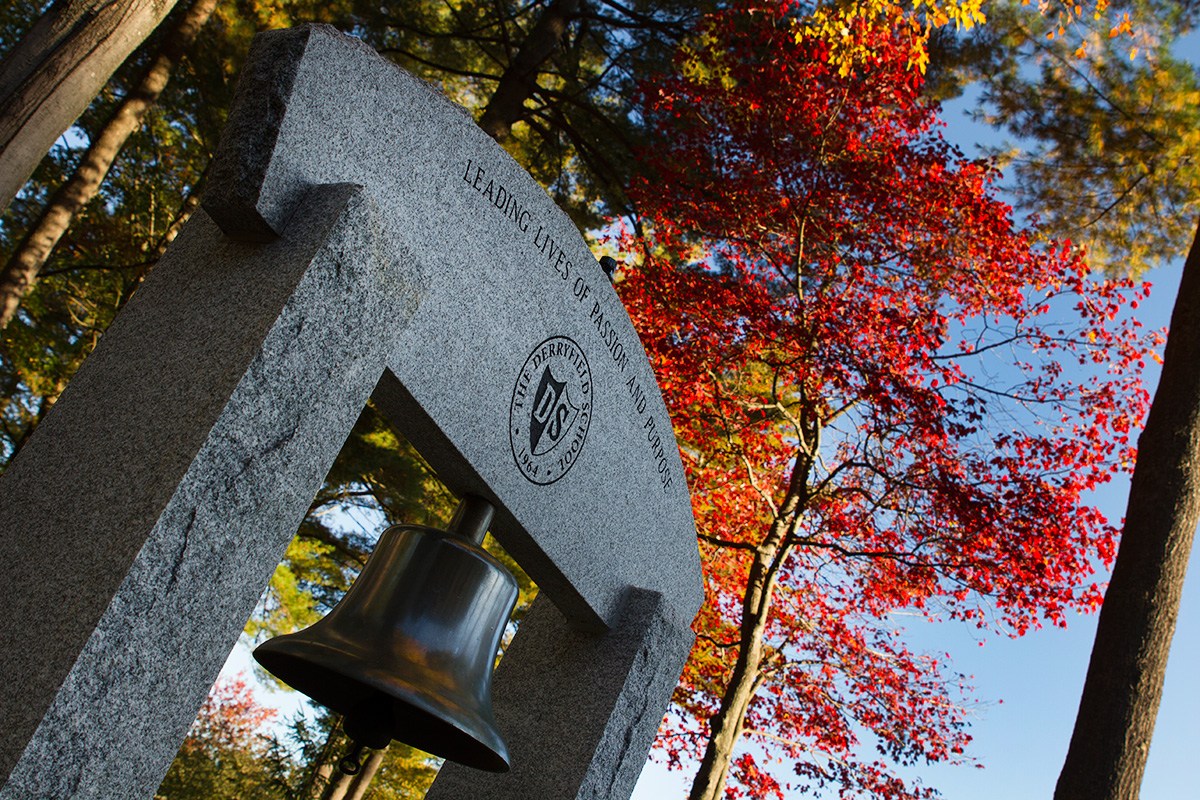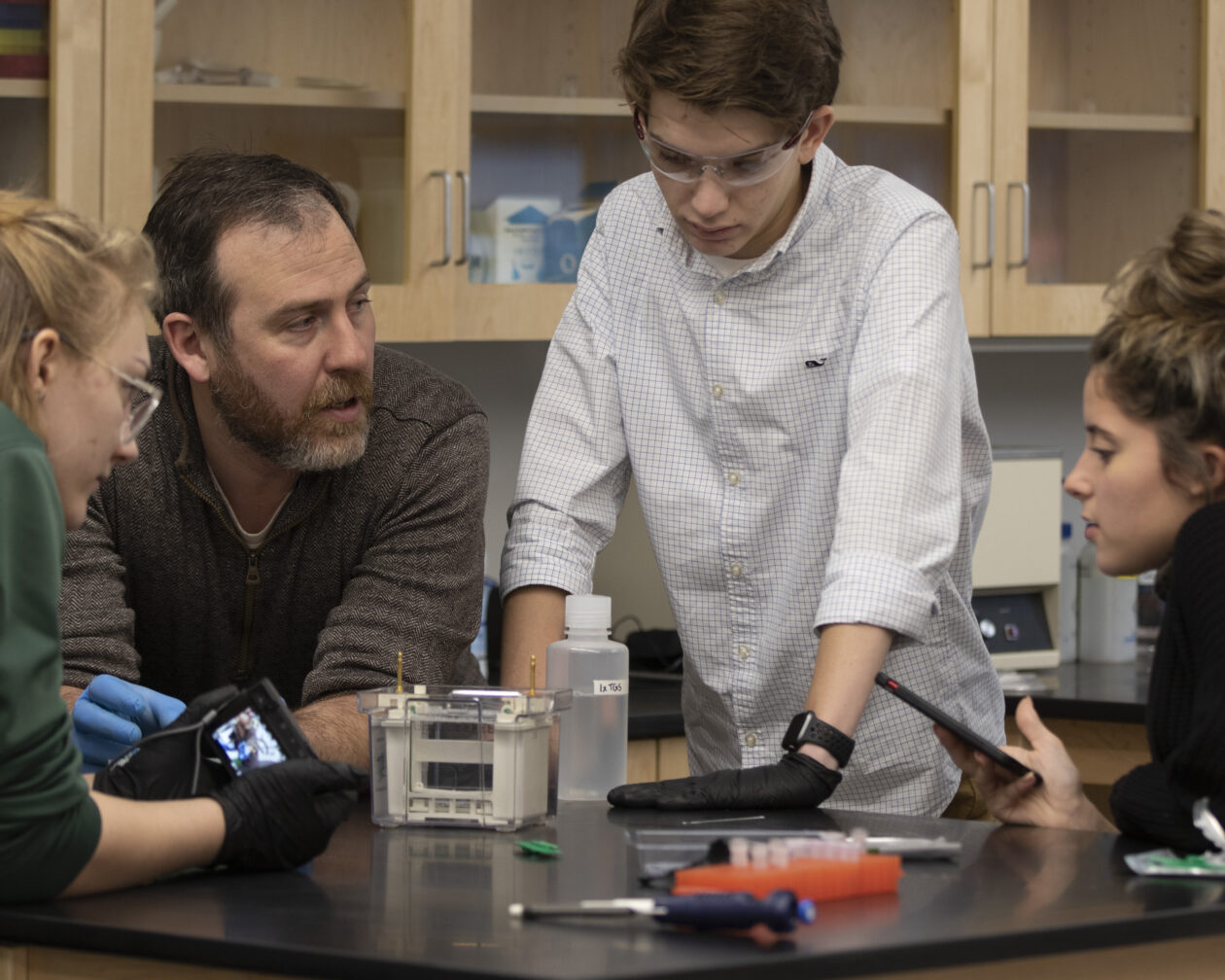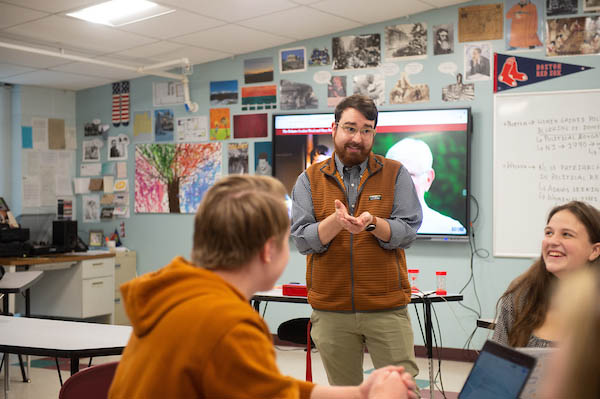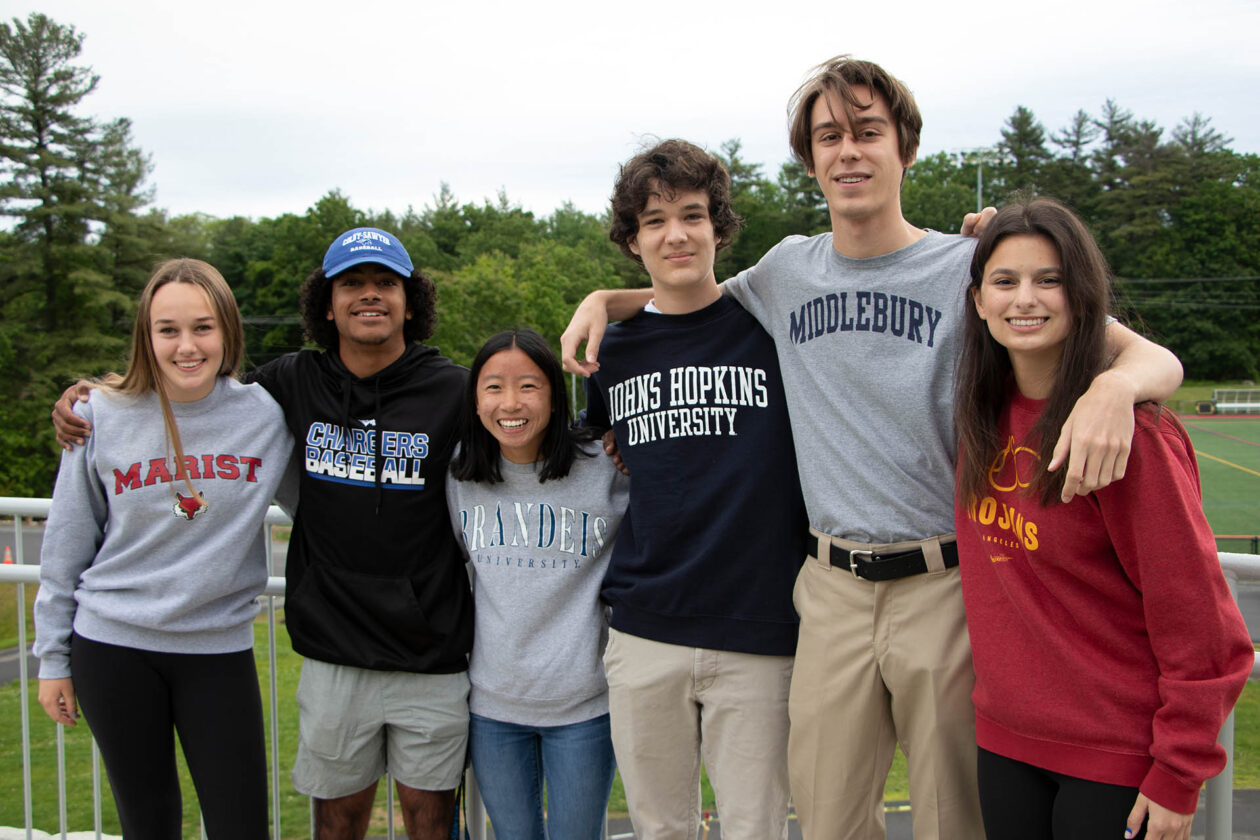Upper School STEAM X
The Philosophy
The STEAM X program introduces students to Design Thinking models that leverage Science, Technology, Engineering, Art and Mathematics (“STEAM”) to solve authentic problems. In a STEAM X course, students engage in hands-on design work as they tackle challenges and tasks. Whether it’s designing software, designing an investment tool, building a robot, or experimenting with wing design, by challenging students to explore the unknown, we aim to ignite student creativity and empower them to answer important world questions.
Computer Science: Practice and Principles
Open to: Grade 9
This exposure course is designed to give all freshmen an introduction to the principles of computer programming and the impact that computational technologies have on modern society. We will work in the Python programming language and learn basic control structures, object manipulation, and get introduced to data structures. We will also consider other topics such as cryptography and security, big data, digital humanism, virtual/alternate reality and artificial intelligence. Students will be able to transfer and apply the knowledge from this course to make better informed decisions about how to leverage technology using interdisciplinary approaches. Computer Science Practice and Principles also serves as a gateway to future coding and STEAM courses. This course is graded pass/fail and is included in LEAD programming. It is not open for separate course requests.
STEAM X: Engineering Design Process
Fall
Open to: Grades 9-12
How are products developed? Why is there a new iPhone every year? What requirements need to be satisfied before an idea becomes a reality? In this course, students will be introduced to the iterative nature of the Engineering Design Process and work through it on a variety of projects. Using foundational engineering principles and hands-on practices, students will brainstorm, design, prototype, and develop solutions to real-world engineering problems. Engineering projects may include crafting a structure to protect an egg when dropped from a significant height, constructing a truss bridge with popsicle sticks, creating a water wheel or windmill to generate electricity, and designing an efficient assembly line.
STEAM X: 3-D Design
Winter
Open to: Grades 9-12
Bring your ideas to life! In this course, students will be introduced to the fundamentals of 3D computer design and utilize shapes-based modeling software to push the limits of their creativity and technical understanding. Students will utilize Derryfieldʼs state-of-the-art makerspace to 3D print designs and construct final projects to satisfy specific criteria. Introductory engineering projects may include designing a statue that can print in a specified time and creating gravity-powered and motorized race cars. As the term draws to a close, students will be tasked with identifying a specific problem, and then developing and executing a unique solution to said problem. The only limit is your imagination!
STEAM X: Engineering Alternative Energy
Spring
Open to: Grades 9-12
What is the future of energy? As humanity seeks to reduce greenhouse gas emissions and limit climate change, innovation in sources of renewable energy such as wind, hydro, solar, and nuclear will be vital. In this course, we will explore the current state of these energy sources as well as promising new technologies. While we won’t be able to build our own nuclear reactor, engineering projects may include building mini wind turbines, hydroelectric generators, and solar-powered cars.
STEAM X: Legacy and Independent Projects
Year Long
Open to: Grades 9-12
Projects offer the opportunity for strong, highly motivated students to design and undertake their own interdisciplinary projects under the guidance of the STEAM X faculty, or participate in one of several legacy endeavors. Students will work independently on their projects and regularly exchange ideas, resources, and updates. Students will walk through the design process for their project: brainstorm, proposal, research summary, detailed plan, and regular progress reports. Interested students should see Mr. Brandt for more information.
Computer Science: Web Development
Fall, Winter, Spring
Open to: Grades 9-12
In this section of the Computer Science STEAM X course, students learn how to create and stylize web pages using HTML and CSS. Students also have the opportunity to create interactive web applications using Javascript. This course is taught in a hands-on, laboratory format. Students begin the term by building small example web pages. Students then progress to designing and building their own custom website or application. The goal of this class is for the students to learn in a fun, non-intimidating way through self-paced, student-driven projects. If you’ve ever wanted to build your own beautifully stylized website, then this course is for you!
Computer Science: Programming with Arduino
Fall, Winter, Spring
Open to: Grades 9-12
In this section of the Computer Science STEAM X course, students learn how to build electronic circuits and control them using the popular Arduino microcontroller. Students learn about electricity and how to build useful systems that use sensors, motors, LEDs, buzzers, and touchscreens. Students also learn basic programming concepts and learn how to control electromechanical systems using an Arduino controller. This course is taught in a hands-on, laboratory format. Students begin the term by building example circuits and systems. Students then progress to designing and building their own custom invention. The goal of this class is for the students to learn in a fun, non-intimidating way through self-paced, student-driven projects. If you’ve ever wanted to create the next must-have electronic gadget, then this course is for you!
Computer Science: Mobile Application Design
Fall, Winter, Spring
Open to: Grades 9-12
In this section of the Computer Science STEAM X course, students learn to write mobile applications using the MIT App Inventor programming tool. Students learn basic programming concepts while they create fun, multimedia games and applications for an Android tablet or mobile phone. Students learn about event-driven programming, and they get practical experience in app design and development. This course is taught in a hands-on, laboratory format. Students begin the term by building instructive, example Android applications. Students then progress to designing and building their own custom application. If you’ve ever wanted to write the next viral app, then this course is for you!
Software Design with Java
Year Long
Open to: Grades 9-12
This course offers an extensive introduction to computer programming and software design using the Java programming language. There are no prerequisites for this course, but some understanding of basic programming structures, such as the coding topics learned in Computer Science Practice and Principles, or the Computer Science Elective courses, would be helpful. This course begins with the basic syntax of Java, including variables and types, simple commands, program flow and decision statements, and iterative looping structures. We then proceed to arrays and array lists, interfaces and polymorphism, inheritance hierarchies, recursion, analysis of algorithms, sorting and searching. While we learn the particulars of Java, we focus on more broad-based language and design concepts that apply to different higher languages. Required: A laptop running Windows, Linux, or MacOS. This course is cross-listed with Mathematics.
Advanced Topics Computer Science: Software Design with Java
Year Long
Open to: Grades 11 & 12
Prerequisite: Permission from the teacher
Embedded in Introduction to Software Design with Java, this course allows students with a stronger background in computer science to learn the Java programming language. The AT students in the class will also work independently on an exploration of Theoretical Computer Science, using the textbook Introduction to the Theory of Computation by Michael Sipser. This is a high-level and mathematically challenging exploration of automata, regular expressions, context-free grammars, Turing machines, the halting problem, and the P=NP problem. No specific prior knowledge is required and the required mathematical techniques will be introduced, but some programming experience and mathematical maturity are highly desired. Students who have previously taken the non-AT version of this class will focus more on the Theoretical Computer Science topic. This course will require meeting times in addition to the regularly scheduled blocks. Required: A laptop running Windows, Linux, or MacOS. This course is cross-listed with Mathematics.
Advanced Topics Mathematics: Investment Math
Year Long
Open to: Grade 12
Prerequisite: Precalculus
This seminar-style course will begin with an exploration of the broader capital markets and an examination of the fundamental principles of investing (time value of money, efficient market hypothesis, risk vs. return, supply/demand dynamics, market cycles, etc.). The focus will then shift to the technical analysis of single security price data as an ideal application of precalculus and other mathematics. Students will be responsible for analyzing a specific stock over the course of the term using the tools developed in the class. Throughout the course, there will be an emphasis on relating current events to the financial markets. The class will explore the power of TradingView’s software. We will learn about some of the many different functionalities that TradingView offers, and we will apply these functionalities to different price series. We will begin to develop our first strategy by optimizing parameters of basic analysis techniques learned in the fall. We will apply an advanced statistical analysis to review our results. Then, we will learn how to code using PineScript. We will then develop hypotheses about what drives the markets and use our ability to code to write algorithmic trading programs that try to capture gains from these observations. We will backtest our programs and evaluate their performance. We will then learn about how to manage a portfolio through the application of many different non-correlated algorithms. This course is cross-listed with Mathematics.





